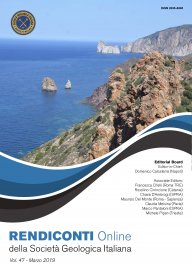
Palaeomagnetism and the debate on the size of the Earth
Paolo Sudiro (1)
(1) Baker Hughes a GE Co LLC, Via S. Lucia 14 Vigonza 35010 - Italy.
Corresponding author e-mail: Paolo.Sudiro@bhge.com - Phone: 3487435113
Volume: 47/2019
Pages: 179-184
Abstract
During the first half of XX Century, the Expanding Earth was a promising geodynamic hypothesis, because it could explain the evidence of ancient continental connections without requiring the lateral movement of continents. If the planet was inflating, the surface would expand, breaking up continents and increasing their reciprocal separation without drift. Moreover, while Earth contraction had been justified by density changes due to heat dissipation, early expansionists suggested that the heat generated by internal radioactive sources was driving Earth expansion.
Looking for evidence in support of the expansion idea, early expansionists understood that palaeomagnetism could help quantifying the palaeo-Earth radius, and its change through time. However, palaeomagnetic data showed that no significant increase on the size of the Earth had occurred in the geological past. At the same time, continental palaeomagnetism showed that continents had continuously changed position in the geological past, supporting the mobilist model. Faced with the disappointing results from palaeomagnetic studies, the remaining supporters of Earth expansion continued to report only the palaeomagnetic data that might appear to support their hypothesis, but carefully neglected to acknowledge the disproving evidence.
Keywords
Get Full Text